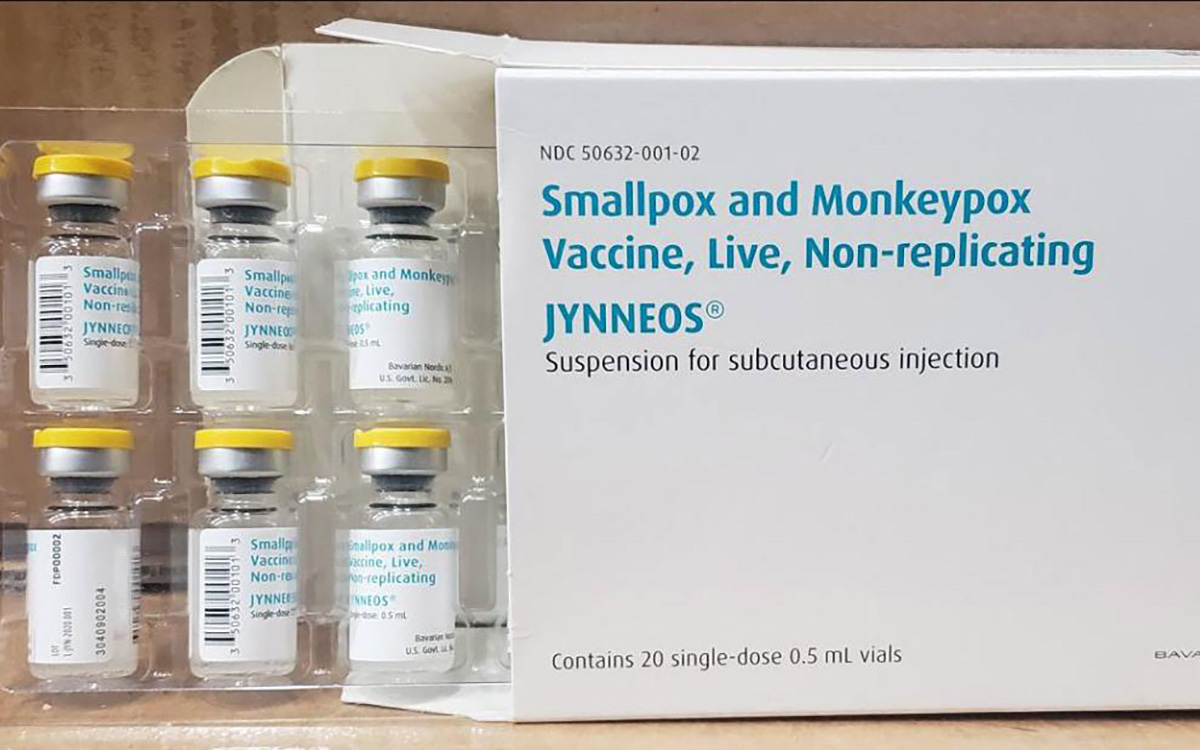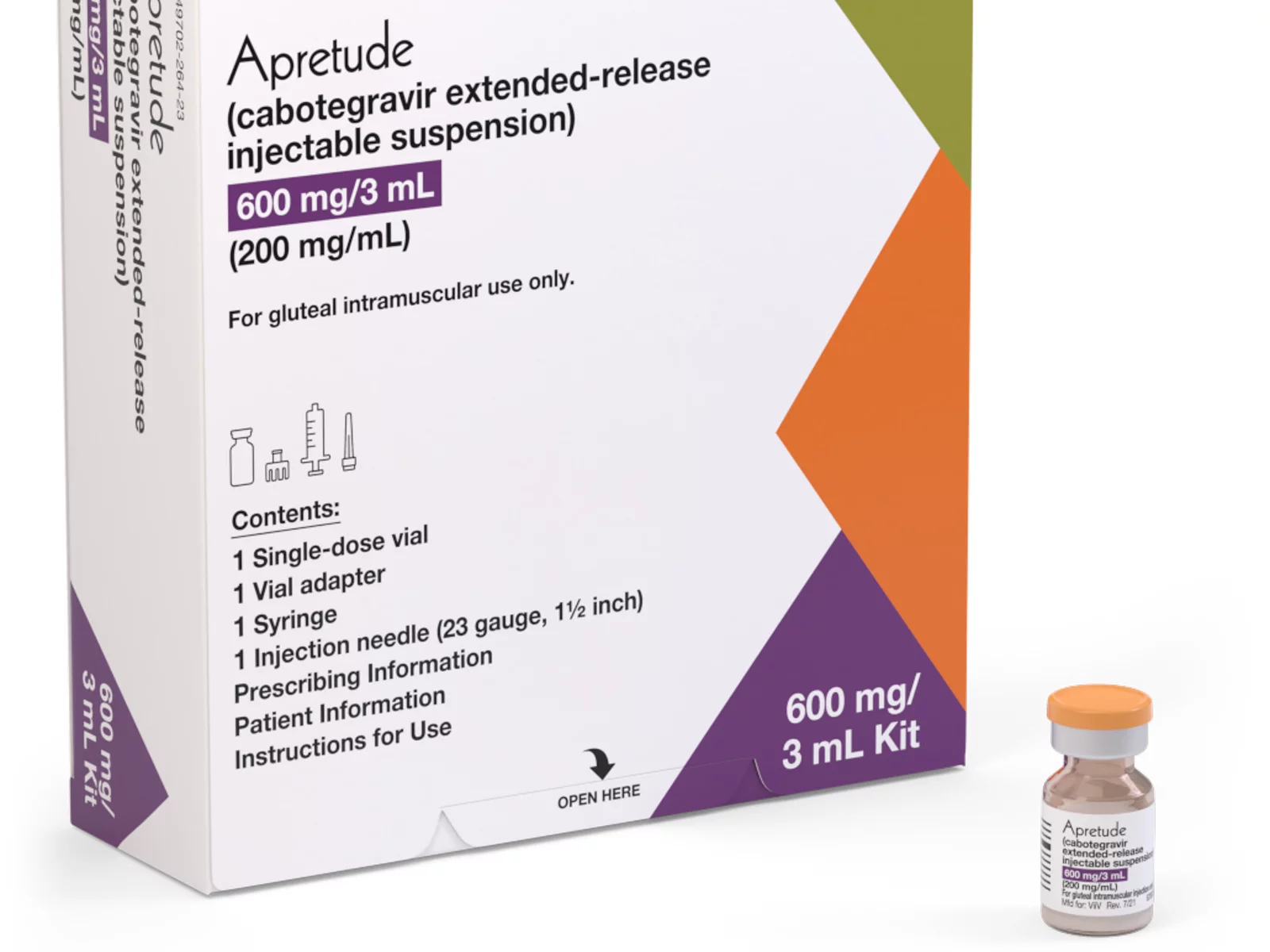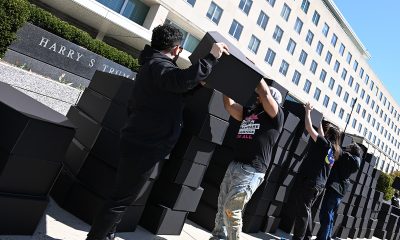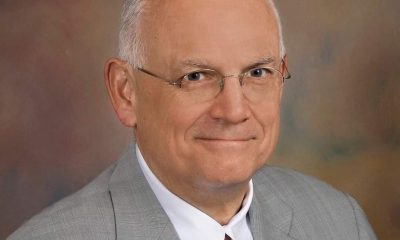Health
The graying of AIDS: living longer with HIV
‘None of us expected to live this long’

D.C. resident John Klenert signed up for a National Institutes of Health-funded AIDS study at Johns Hopkins University in 1984. The Centers for Disease Control reported the first cases of what became known as AIDS three years earlier, but some of Klenert’s friends had already passed away from the virus by the time the research project had begun.
“We figured if there was going to be a cure that we would be the first ones to volunteer to get these tests,” he said.
Johns Hopkins researchers in 1986 screened the first blood samples that Klenert and other study participants had given once scientists discovered the virus that causes AIDS. “For me, the first blood I had given was positive,” he said. “I would have been shocked had I turned out to be negative.”
Older people with HIV will be the focus of a July 25 forum at the International AIDS Conference. Panelists will include Ricardo Jimenez of the Ecuadorian Red Cross, Carolyn Massey of Older Women Embracing Life, Inc., Wojciech Tomczynski of the Polish Network of People Living with HIV/AIDS Association and Ruth Waryaro of Help Age International in Uganda. Doctor Kevin Fenton of the Centers for Disease Control and Prevention and Stephen Karpiak and Mark Brennan-Ing of AIDS Community Research Initiative of America’s Center on HIV and Aging and New York University College of Nursing are among those who are scheduled to speak during the plenary.
The CDC estimates that 10.8 percent of the roughly 50,000 new HIV infections that occur each year in the United States are among those older than 50. It further reports that 16.7 percent of new diagnoses in 2009 were among this demographic, with half of them also having AIDS. Federal health officials predict that half of people with HIV in the United States by 2015 will be older than 50.
ACRIA, the New York-based Gay Men’s Health Crisis and Services and Advocacy for GLBT Elders co-organized the forum as part of what SAGE Senior Director of Public Policy Robert Espinoza described to the Blade as a need to increase visibility around HIV-related aging issues.
“We feel it’s an important conversation because there are so many people who are aging with HIV and AIDS,” he told the Blade.
Increased access to treatment in the United States and other developed countries has allowed more people with HIV to live longer. The arrival of more widely available anti-retroviral drugs in the mid-1990s has also contributed to this trend.
“If you were 35 in 1990 and you made it to the mid to late 90s and got on protease inhibitors, there’s a good chance you’re still alive today and you’d be above 50,” said ACRIA executive director Daniel Tietz. “And that’s the reality.”
Older people with HIV face unique challenges
Johns Hopkins and CDC researchers noted earlier this year that older people with HIV are more likely to suffer higher rates of cardiovascular disease, osteoporosis, non-AIDS related cancers and other chronic illnesses. Klenert, who is now 63, has had a brain tumor removed and an operation to repair an aneurysm over the last 30 years. He said that his neurologist and cardiologist both said that his HIV status did not contribute to either of these conditions.
“There are many folks who age into this — they’ve had HIV for a while, their HIV is reasonably well-managed,” said Tietz. “It’s their other things. It’s their hypertension, the diabetes, the heart disease that are posing challenges in terms of management.”
This population also faces the same hurdles that service providers maintain older LGBT people without the virus routinely face. These include a lack of health care, financial insecurity and social isolation, but a person’s HIV status can acerbate these problems.
“The LGBT community in general is not great on aging issues; they tend to be more youth centered,” said Espinoza. “We find that a lot of older adults with HIV are often looking just for both the caregiving support they need to manage their health and remain optimistic and maintain their emotional health, but they are looking for community.”
He and other service providers stressed that stigmas associated with HIV and sexuality can dissuade older people from discussing their sexual health with doctors and other health care providers.
“If you’re not talking openly to people who manage your health then it’s going to then prevent the kind of services you need to age successfully,” said Espinoza, further stressing that many health care providers don’t even provide HIV tests to their older patients who could have just become sexually active after leaving a relationship or getting divorced. “We’re dealing with constituents who have been living with HIV and AIDS for years. We’re dealing with constituents who have been infected for years, but just got diagnosed, which often means the illness has progressed more in their bodies. And then we’re also dealing with constituents who just became infected and are trying to assimilate to both the emotional and health issues related to their infection.”
The New York City Council has funded ACRIA’s efforts to bolster HIV prevention efforts among older New Yorkers with HIV. The National Institutes of Health’s Office of AIDS Research has also established a working group to study the virus’ impact on older people.
“I don’t think government officials have put this on their radar screen as much as they should,” said Espinoza. “As the demographic really begins growing in the next two years, we’re going to see more questions from aging providers and health care professionals about what it means to appropriately serve older adults with HIV and engage them in their facilities or in their long-term care facilities. And with that, I’m hoping that government officials will also increase their attention and increase the funding for that kind of programmatic prevention.”
Seeking to increase visibility
Those who advocate on behalf of older people with HIV further stress that lack of visibility remains a problem.
The Graying of AIDS project profiles older people with the virus as a follow-up to photojournalist Katja Heinemann’s eponymous photo essay that “Time” published in 2006 to mark the epidemic’s 25th anniversary. D.C. resident Ronald Johnson, vice president of policy and advocacy for AIDS United, is among the 11 people that Heinemann and Naomi Schegloff profile in photographs and short videos.
Schegloff, who works in the public health field, told the Blade that she “very much appreciated” what she described as “frank discussions” about sexuality that took place with many of those whom she and Heinemann profiled. Discrimination, a desire for companionship and a general lack of information about HIV are also common themes.
“A lot of older adults have not been on the market in the last 30 years, or have barely been on the market in the last 30 years,” said Schegloff. “If they’ve been with a partner — married or otherwise — for a long time, they may or may not have dated at a time when HIV was something we knew about. If for them condoms are something that you use to avoid getting pregnant and they’re heterosexual and they’re a woman and they’ve gone through menopause, they’re not worried about that anymore. And it used to be that for people of a certain generation, the worst thing you could get through sex as one person told us in an interview is something you can take penicillin for now. They weren’t necessarily thinking about this thing [HIV] as being relevant to them.”
Heinemann and Schegloff plan to photograph and interview those from the United States and around the world who are interested in participating in their project during the Global Village at the International AIDS Conference. They will upload images, interview excerpts and other content to an online exhibition during the five-day gathering.
“For us as a visual project and a documentary project, we’re hoping to really put a face to this that will be a little bit of a wakeup call where you don’t just read the statistic,” said Heinemann. “But you’re also able to see oh yeah wait a minute, this is not just Bill in Chicago and Ronald in D.C. This is also a person from Tanzania; this is also a person from Russia or someone from India.”
Klenert, a former Victory Fund and Gay and Lesbian Alliance Against Defamation board member, also reflected upon those with HIV who continue to grow older.
“I’d like to think that people in my age group are hopeful as well as surprised,” he said in response to a question about the changes he has seen since he tested positive. “I’m guessing that most of us didn’t think that we would live this long. There’s that old greeting card [that says] had I lived this long I would have taken better care of us. Back when we were in our 30s — or late 30s — none of us expected to live this long because back then the mortality rate was almost 100 percent.”
Monkeypox
US contributes more than $90 million to fight mpox outbreak in Africa
WHO and Africa CDC has declared a public health emergency

The U.S. has contributed more than $90 million to the fight against the mpox outbreak in Africa.
The U.S. Agency for International Development on Tuesday in a press release announced “up to an additional” $35 million “in emergency health assistance to bolster response efforts for the clade I mpox outbreak in Central and Eastern Africa, pending congressional notification.” The press release notes the Biden-Harris administration previously pledged more than $55 million to fight the outbreak in Congo and other African countries.
“The additional assistance announced today will enable USAID to continue working closely with affected countries, as well as regional and global health partners, to expand support and reduce the impact of this outbreak as it continues to evolve,” it reads. “USAID support includes assistance with surveillance, diagnostics, risk communication and community engagement, infection prevention and control, case management, and vaccination planning and coordination.”
The World Health Organization and the Africa Centers for Disease Control and Prevention last week declared the outbreak a public health emergency.
The Washington Blade last week reported there are more than 17,000 suspected mpox cases across in Congo, Uganda, Kenya, Rwanda, and other African countries. The outbreak has claimed more than 500 lives, mostly in Congo.
Health
Mpox outbreak in Africa declared global health emergency
ONE: 10 million vaccine doses needed on the continent

Medical facilities that provide treatment to gay and bisexual men in some East African countries are already collaborating with them to prevent the spread of a new wave of mpox cases after the World Health Organization on Wednesday declared a global health emergency.
The collaboration, both in Uganda and Kenya, comes amid WHO’s latest report released on Aug. 12, which reveals that nine out of every 10 reported mpox cases are men with sex as the most common cause of infection.
The global mpox outbreak report — based on data that national authorities collected between January 2022 and June of this year — notes 87,189 of the 90,410 reported cases were men. Ninety-six percent of whom were infected through sex.
Sexual contact as the leading mode of transmission accounted for 19,102 of 22,802 cases, followed by non-sexual person-to-person contact. Genital rash was the most common symptom, followed by fever and systemic rash.
The WHO report states the pattern of mpox virus transmission has persisted over the last six months, with 97 percent of new cases reporting sexual contact through oral, vaginal, or anal sex with infected people.
“Sexual transmission has been recorded in the Democratic Republic of Congo among sex workers and men who have sex with men,” the report reads. “Among cases exposed through sexual contact in the Democratic Republic of the Congo, some individuals present only with genital lesions, rather than the more typical extensive rash associated with the virus.”
The growing mpox cases, which are now more than 2,800 reported cases in at least 13 African countries that include Kenya, Uganda, Rwanda, and prompted the Africa Centers for Disease Control and Prevention this week to declare the disease a public health emergency for resource mobilization on the continent to tackle it.
“Africa has long been on the frontlines in the fight against infectious diseases, often with limited resources,” said Africa CDC Director General Jean Kaseya. “The battle against Mpox demands a global response. We need your support, expertise, and solidarity. The world cannot afford to turn a blind eye to this crisis.”
The disease has so far claimed more than 500 lives, mostly in Congo, even as the Africa CDC notes suspected mpox cases across the continent have surged past 17,000, compared to 7,146 cases in 2022 and 14,957 cases last year.
“This is just the tip of the iceberg when we consider the many weaknesses in surveillance, laboratory testing, and contact tracing,” Kaseya said.
WHO, led by Director General Tedros Adhanom Ghebreyesus, also followed the Africa CDC’s move by declaring the mpox outbreak a public health emergency of international concern.
The latest WHO report reveals that men, including those who identify as gay and bisexual, constitute most mpox cases in Kenya and Uganda. The two countries have recorded their first cases, and has put queer rights organizations and health care centers that treat the LGBTQ community on high alert.
The Uganda Minority Shelters Consortium, for example, confirmed to the Washington Blade that the collaboration with health service providers to prevent the spread of mpox among gay and bisexual men is “nascent and uneven.”
“While some community-led health service providers such as Ark Wellness Clinic, Children of the Sun Clinic, Ice Breakers Uganda Clinic, and Happy Family Youth Clinic, have demonstrated commendable efforts, widespread collaboration on mpox prevention remains a significant gap,” UMSC Coordinator John Grace stated. “This is particularly evident when compared to the response to the previous Red Eyes outbreak within the LGBT community.”
Grace noted that as of Wednesday, there were no known queer-friendly health service providers to offer mpox vaccinations to men who have sex with men. He called for health care centers to provide inclusive services and a more coordinated approach.
Although Grace pointed out the fear of discrimination — and particularly Uganda’s Anti-Homosexuality Act — remains a big barrier to mpox prevention through testing, vaccination, and treatment among queer people, he confirmed no mpox cases have been reported among the LGBTQ community.
Uganda so far has reported two mpox cases — refugees who had travelled from Congo.
“We are for the most part encouraging safer sex practices even after potential future vaccinations are conducted as it can also be spread through bodily fluids like saliva and sweat,” Grace said.
Grace also noted that raising awareness about mpox among the queer community and seeking treatment when infected remains a challenge due to the historical and ongoing homophobic stigma and that more comprehensive and reliable advocacy is needed. He said Grindr and other digital platforms have been crucial in raising awareness.
The declarations of mpox as a global health emergency have already attracted demand for global leaders to support African countries to swiftly obtain the necessary vaccines and diagnostics.
“History shows we must act quickly and decisively when a public health emergency strikes. The current Mpox outbreak in Africa is one such emergency,” said ONE Global Health Senior Policy Director Jenny Ottenhoff.
ONE is a global, nonpartisan organization that advocates for the investments needed to create economic opportunities and healthier lives in Africa.
Ottenhoff warned failure to support the African countries with medical supplies needed to tackle mpox would leave the continent defenseless against the virus.
To ensure that African countries are adequately supported, ONE wants governments and pharmaceutical companies to urgently increase the provision of mpox vaccines so that the most affected African countries have affordable access to them. It also notes 10 million vaccine doses are currently needed to control the mpox outbreak in Africa, yet the continent has only 200,000 doses.
The Blade has reached out to Ishtar MSM, a community-based healthcare center in Nairobi, Kenya, that offers to service to gay and bisexual men, about their response to the mpox outbreak.
Health
White House urged to expand PrEP coverage for injectable form
HIV/AIDS service organizations made call on Wednesday

A coalition of 63 organizations dedicated to ending HIV called on the Biden-Harris administration on Wednesday to require insurers to cover long-acting pre-exposure prophylaxis (PrEP) without cost-sharing.
In a letter to Chiquita Brooks-LaSure, administrator of the Centers for Medicare and Medicaid Services, the groups emphasized the need for broad and equitable access to PrEP free of insurance barriers.
Long-acting PrEP is an injectable form of PrEP that’s effective over a long period of time. The FDA approved Apretude (cabotegravir extended-release injectable suspension) as the first and only long-acting injectable PrEP in late 2021. It’s intended for adults and adolescents weighing at least 77 lbs. who are at risk for HIV through sex.
The U.S. Preventive Services Task Force updated its recommendation for PrEP on Aug. 22, 2023, to include new medications such as the first long-acting PrEP drug. The coalition wants CMS to issue guidance requiring insurers to cover all forms of PrEP, including current and future FDA-approved drugs.
“Long-acting PrEP can be the answer to low PrEP uptake, particularly in communities not using PrEP today,” said Carl Schmid, executive director of the HIV+Hepatitis Policy Institute. “The Biden administration has an opportunity to ensure that people with private insurance can access PrEP now and into the future, free of any cost-sharing, with properly worded guidance to insurers.”
Currently, only 36 percent of those who could benefit from PrEP are using it. Significant disparities exist among racial and ethnic groups. Black people constitute 39 percent of new HIV diagnoses but only 14 percent of PrEP users, while Latinos represent 31 percent of new diagnoses but only 18 percent of PrEP users. In contrast, white people represent 24 percent of HIV diagnoses but 64 percent of PrEP users.
The groups also want CMS to prohibit insurers from employing prior authorization for PrEP, citing it as a significant barrier to access. Several states, including New York and California, already prohibit prior authorization for PrEP.
Modeling conducted for HIV+Hep, based on clinical trials of a once every 2-month injection, suggests that 87 percent more HIV cases would be averted compared to daily oral PrEP, with $4.25 billion in averted healthcare costs over 10 years.
Despite guidance issued to insurers in July 2021, PrEP users continue to report being charged cost-sharing for both the drug and ancillary services. A recent review of claims data found that 36 percent of PrEP users were charged for their drugs, and even 31 percent of those using generic PrEP faced cost-sharing.
The coalition’s letter follows a more detailed communication sent by HIV+Hepatitis Policy Institute to the Biden administration on July 2.
Signatories to the community letter include Advocates for Youth, AIDS United, Equality California, Fenway Health, Human Rights Campaign, and the National Coalition of STD Directors, among others.
-

 State Department5 days ago
State Department5 days agoHIV/AIDS activists protest at State Department, demand full PEPFAR funding restoration
-

 Brazil5 days ago
Brazil5 days agoUS lists transgender Brazilian congresswoman’s gender as ‘male’ on visa
-

 District of Columbia5 days ago
District of Columbia5 days agoCapital Pride wins $900,000 D.C. grant to support WorldPride
-

 Obituary4 days ago
Obituary4 days agoLocal attorney, LGBTQ rights advocate Dale Sanders dies at 75









